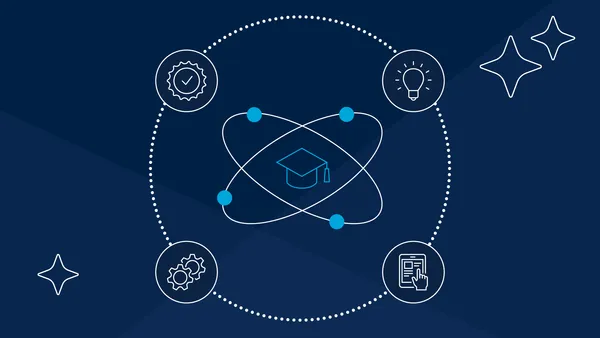Fielding a college or university’s administrative processes can feel as confusing as navigating campus as a first-day freshman. Amidst tuition inflation and a historic student loan crisis, leaders in education must embrace innovation to demonstrate value and place the student experience as a top priority. This doesn’t need to be a sweeping system overhaul. It can be as simple as making it easier for students to navigate the university processes and get the answers and information they need.
Do your students have difficulty getting the answers they need to complete the necessary administrative tasks? Is your institution overdue for a discussion on improving your student support model? Is your support system for your students siloed? How can you leverage the latest in AI, digital communications, and automation to stay at the forefront? Here are three key questions to ask as you evaluate the capabilities and limitations of your existing infrastructure.
Do we support a streamlined customized experience for students? That is, how easily can they navigate all the experiences of our campus/organization?
Navigating university life can be overwhelming: financial aid confusion, the need for student health/wellness services, trying to get a parking permit…the list goes on.
Universities are grappling with reduced staff numbers and increasing inquiries related to administrative processes. The recent error-prone rollout of the Free Application for Federal Student Aid (FAFSA) has overwhelmed financial aid departments nationwide with questions and concerns from parents and students. Implementing virtual agents to address high-need areas and answer frequently asked questions can free up staff to manage more complex situations.
By creating a custom student entry portal, students can immediately obtain information tailored directly to their needs without having to navigate numerous departments individually.
This is possible using a virtual agent solution powered by generative AI. Gen AI can be extensively trained based on a university’s repository of documentation, manuals, knowledge base articles, and more to understand, interpret, and respond to students’ inquiries with remarkable accuracy and context – providing instant, precise, and contextually relevant answers even to more complex questions. Empathetic virtual staff can be created to actually guide students with care and understanding, ensuring that every interaction is infused with the spirit of the university. All students will be supported by bridging cultures with high-quality real-time translation services within the support model.
Do we make it easy for students to engage with us in multiple different ways?
Gen Z’ers (today’s average college student) are all about fast, concise, and visual information exchange. It comes to no surprise that their preference is text messaging.
According to research, text messages have a nearly 100% open rate; 90% of all texts are read within three minutes; and college students spend more than 90 minutes every day texting. It’s no wonder 77% of students want relevant information from their college via text. Text messaging is easy to add to your channel mix and improve the campus’ ability to ensure the students are obtaining the information they need to be successful while delivering demonstrable outcomes such as in recruitment and retention.
Do we have visibility into the student journey?
We all know the feeling of frustration when one transfer turns into two, three, or more. We’re forced to jump through the same hoops, repeating the same information, and still not always get the answers we need. This is due to a lack of customer journey mapping – the ability to visually see every engagement a student has with the university, all information about previous interactions, and which have common student identifiers.
Examples of student identifiers include data across different channels, data from different devices, student interests, needs, and wants, and standard ID data like name, location, and contact information. Universities can use these unique identifiers to match an interaction with an existing customer. If a common identifier is flagged, that students’ entire journey across all channels and interactions is automatically pulled up.
Colleges and universities should consider the customer journey mapping model of a digital student notebook to enable staff to understand each students’ needs crafting a support portfolio unique to each student. Avaya Experience Platform provides a simple graphical representation that makes it easy for office staff to see this end-to-end journey, including a transcript option to view all previous chat, messaging, email, and social media messaging interactions.
Keep Your Existing System While Integrating New Innovation
Colleges and universities are in a variety of stages of digital transformation. These innovations can be implemented incrementally regardless of your current solution. Our innovation without disruption approach allows you to continue operating seamlessly while consuming innovation at your pace, driving down change fatigue and delivering tangible results faster. See some of our education success stories here.
How will your school be affected if you don’t make new investments in innovation? Start integrating the new tech you need without risking resiliency or disrupting operations with Avaya’s innovation without disruption approach.










